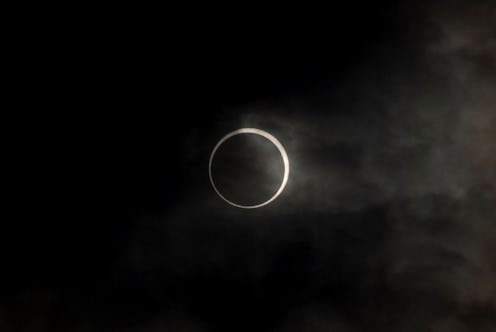Life
What Is An Annular Solar Eclipse?
Sept. 1, 2016 is going to be one heck of a celebration. No, not just because it marks the beginning of Pumpkin Spice Latte season (although that's worthy of an international holiday itself). It's because this day will bring an annular solar eclipse — where the sun will appear as a ring of fire in the sky. So what is an annular solar eclipse, exactly, and why does it look the way it looks? The sky is fascinating, so let's take a look at the science behind this spectacular astronomical event.
An eclipse occurs when one celestial body moves into the shadow of another body. Here on Earth, we experience two types of eclipses: An eclipse of the sun (solar), and one of the moon (lunar). On Sept. 1, we'll have a solar eclipse, where the moon will block the sun's light from hitting the Earth — but there are also three different types of solar eclipses: The total solar eclipse, the partial solar eclipse, and the annular solar eclipse. Ah, yes. Here we go.
What makes an annular eclipse unique is that it happens when the moon is at its farthest point away from Earth, known as its apogee. The distance between the moon and Earth changes because the moon orbits us in an elliptical path — not a perfect circle. At its closest, the moon is about 225,804 miles from the Earth; at its apogee, however, it's about 251,968 miles away.
For this reason, the moon appears smaller and does not block as much of the sun as other eclipses. We experience a smaller moon covering a larger sun, thus creating the ring of fire effect bordering the moon, also called an annulus.
It's a rare siting, indeed. The last annular solar eclipse was April 29, 2014, and the next one will be Feb. 26, 2017. So if you're one of the lucky ducks who gets a view of this precious eclipse, don't waste it. Unfortunately for the rest of us, only people in Tanzania will be able to see it. But odds are you'll be able to catch it on the web. The eclipse begins around 3:14 p.m. EST and hits its peak around 5:05 p.m. EST. Don't miss it!
Images: Getty Images
